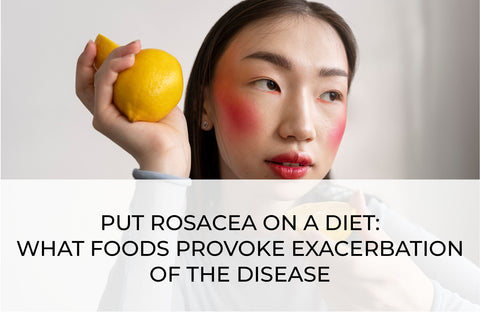VITAMIN A per os FOR BEAUTIFUL AND HEALTHY SKIN

People hear about the need for vitamins from early childhood when they look at broccoli puree. The impact of vitamin deficiencies on the body is sometimes catastrophic and even life-threatening. One of the most "deficient" vitamins today is vitamin A. In 20% of the population of the developed world, the concentration of vitamin A in blood plasma and liver is below the norm.
Even in subclinical form, vitamin A deficiency increases morbidity and mortality from various infectious diseases and increases the incidence of respiratory diseases. The consequences of vitamin A deficiency on the skin are weakening of the epidermal barrier, decreased regenerative capacity of the skin, accelerated aging, decreased skin immunity, pro-inflammatory background, aggravation of chronic dermatoses, hyperkeratosis, scaling, and itching.
The term “vitamin A” conceals a whole group of fat-soluble compounds whose structural element is an unsaturated isoprenoid chain (retinol esters, retinol, retinal, retinoic acid, and oxidized and conjugated forms of both retinol and retinal). There are also metabolic precursors of retinol, the carotenoids [1].
The human body is not capable of vitamin A. Therefore, it is necessary to obtain it from food either in the form of vitamin A or pro-vitamin A. An important food source of vitamin A is animal products containing retinol and retinyl esters. Milk and dairy products and pork or beef liver are the richest in vitamin A, followed by eggs and fish. The amount of vitamin A in animal products can be significantly reduced by improper storage and spoilage (rancidity) of fats. Similarly, the level of retinoids in food is affected by fat overheating (prolonged boiling) during cooking. Culinary losses of retinol during heat treatment of foods can reach 40%.
It should be noted that the content of vitamin A in products of animal origin is in direct correlation with the fat content: the more the product contains fat, the more vitamin A in it. However, this does not mean that fatty meat foods should fill the body's need for vitamin A because vitamin A can also be obtained from plant foods containing metabolic retinol precursors named carotenoids.
When considering food products as a source of vitamin A, it should be considered that products of plant origin contain carotenoids, which require further biotransformation in our bodies. In contrast, products of animal origin containing retinol itself and retinyl esters have a higher bioavailability. The absorption of retinyl esters is 70–90%, and beta-carotene ranges from 8.7% to 65%. This means that more carotenoids are needed to meet vitamin A requirements, and consequently, more carotenoid-rich fruits and vegetables are needed.
In populations from low-income countries, reliance on vitamin A intake solely from vegetables increases the risk of developing vitamin A deficiency. It has been estimated that people in developing countries obtain 70–90% of vitamin A from carotenoids. In comparison, people in industrialized countries consume up to 75% of total vitamin A in the form of retinol and retinyl esters from animal products. In addition, carotenoids are beneficial when ingested in physiologic amounts but cause adverse effects when taken in high doses.
Vitamin A is also included in dietary supplements and most multivitamins, commonly as retinyl acetate, retinyl palmitate, pro-vitamin A beta-carotene, or a combination of these [1, 2].
Because foods contain many nutrients and other components that are beneficial to health, vitamin A needs should be met primarily through them. To maintain optimal levels of vitamin A through food sources, it is recommended to:
- Include pork/beef liver or marine/freshwater fish liver in the diet in acceptable quantities.
- Monitor the caloric intake of animal products.
- Regularly eat vegetables and fruits high in beta-carotene (carrots, pumpkin, apricots, apricots, apricots, apricots, spinach), lycopene (tomatoes), lutein, and zeaxanthin (broccoli, pumpkin, zucchini, spinach).
- Foods containing carotenoids should be combined with dietary fats to increase the bioavailability of pro-vitamin A: grated carrots or vegetable salad should be eaten with 10% sour cream, pumpkin porridge with milk and butter, etc.
- Include apricots, oranges, watermelons, and peaches as a third seasonal dish for lunch.
- Consume whole-grain products (whole-grain pasta, bread made from whole wheat flour, rice, buckwheat, oatmeal, whole wheat breakfast cereals, muesli, barley, rye, corn, cereal soups, porridge, and other dishes made from unprocessed grains, flour, and cereals).
- Limit consuming foods and beverages high in sugar, saturated fat, and sodium.
- Limit consumption of alcoholic beverages.
It should be noted that a healthy person on a balanced diet does not need additional vitamin A supplementation with food supplements. Therefore, when preparing a festive table, do not bypass vitamin A-rich dishes. Be healthy!
References
- Carazo A., Macakova K., Matousova K., et al. Vitamin A update: Forms, sources, kinetics, detection, function, deficiency, therapeutic use and toxicity. Nutrients 2021; 13: 1703.
- Blaner W.S. Vitamin A and Provitamin A Carotenoids. In: Marriott B.P., Birt D.F., Stallings V.A., Yates A.A, eds. Present Knowledge in Nutrition. 11th ed. Cambridge, Massachusetts: Wiley-Blackwell; 2020: 73–91.



































